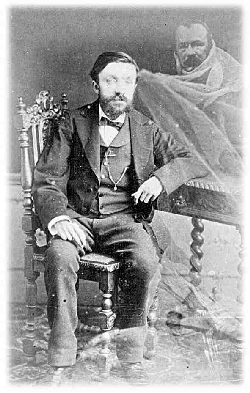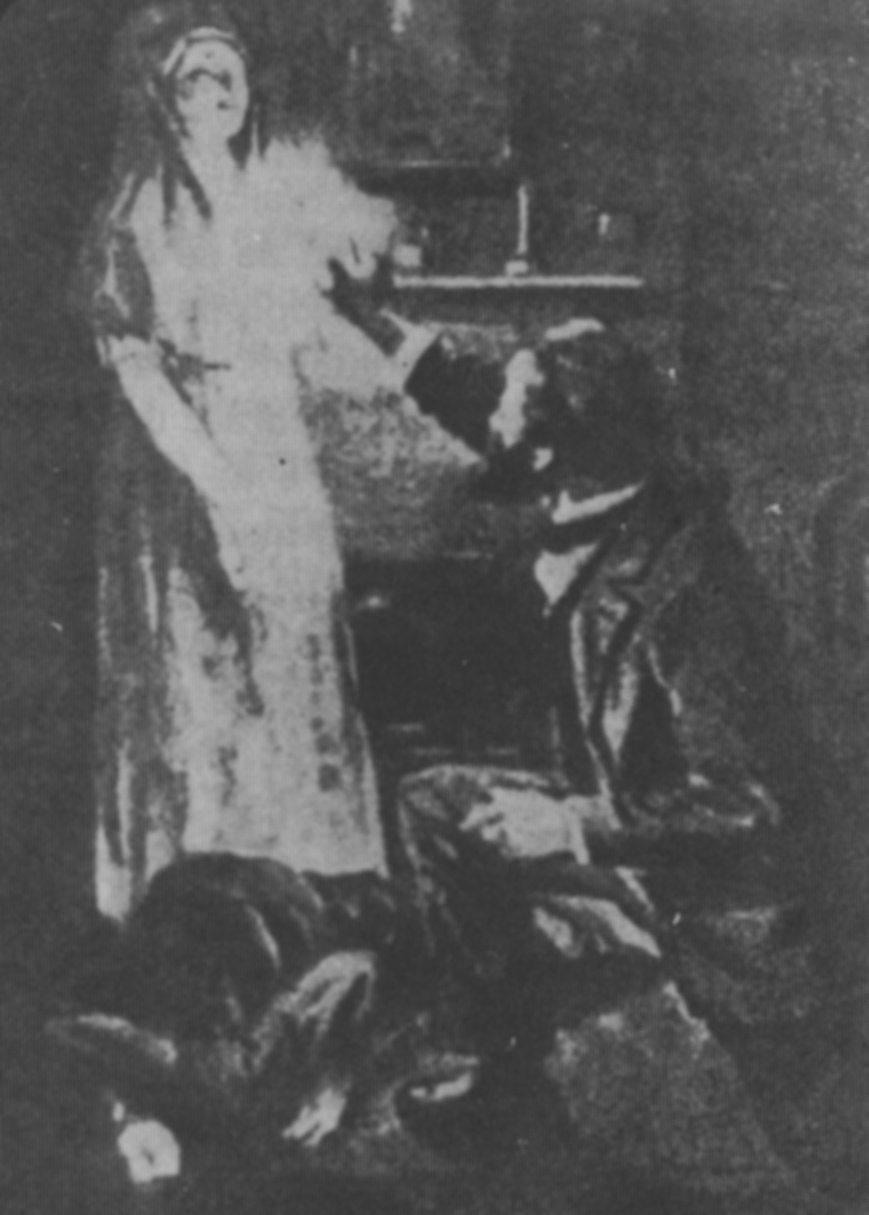|
Thoughtography
Thoughtography, also called projected thermography, psychic photography, nengraphy, and ''nensha'' , is the claimed ability to "burn" images from one's mind onto surfaces such as photographic film by parapsychic means. While the term "thoughtography" has been in the English lexicon since 1913, the more recent term "projected thermography" is a neologism popularized in the 2002 American film '' The Ring'', a remake of the 1998 Japanese horror film '' Ring''. History Thoughtography (also known as psychic photography) first emerged in the late 19th century due to the influence of spirit photography. Thoughtography has no connection with Spiritualism, which distinguishes it from spirit photography. One of the first books to mention "psychic photography" was the book ''The New Photography'' (1896) by Arthur Brunel Chatwood. In the book Chatwood described experiments where the "image of objects on the retina of the human eye might so affect it that a photograph could be produced by look ... [...More Info...] [...Related Items...] OR: [Wikipedia] [Google] [Baidu] |
Parapsychology
Parapsychology is the study of alleged psychic phenomena (extrasensory perception, telepathy, teleportation, precognition, clairvoyance, psychokinesis (also called telekinesis), and psychometry (paranormal), psychometry) and other paranormal claims, for example, those related to near-death experiences, synchronicity, apparitional experiences, etc. Criticized as being a pseudoscience, the majority of mainstream scientists reject it. Parapsychology has been criticised for continuing investigation despite being unable to provide reproducible evidence for the existence of any psychic phenomena after more than a century of research. Parapsychology research rarely appears in mainstream scientific journals; a few niche journals publish most papers about parapsychology. Terminology The term ''parapsychology'' was coined in 1889 by philosopher Max Dessoir as the German . It was adopted by Joseph Banks Rhine, J. B. Rhine in the 1930s as a replacement for the term ''psychical research'' ... [...More Info...] [...Related Items...] OR: [Wikipedia] [Google] [Baidu] |
Doubleday (publisher)
Doubleday is an American publishing company. It was founded as the Doubleday & McClure Company in 1897. By 1947, it was the largest book publisher in the United States. It published the work of mostly U.S. authors under a number of imprints and distributed them through its own stores. In 2009, Doubleday merged with Alfred A. Knopf, Knopf Publishing Group to form the Knopf Doubleday Publishing Group, which, as of 2018, is part of Penguin Random House. History 19th century The firm was founded as Doubleday & McClure Company in 1897 by Frank Nelson Doubleday in partnership with Samuel Sidney McClure. McClure had founded the first U.S. newspaper syndicate in 1884 (McClure Syndicate) and the monthly ''McClure's Magazine'' in 1893. One of their first bestsellers was ''The Day's Work'' by Rudyard Kipling, a short story collection that Macmillan published in Britain late in 1898. Other authors published by the company in its early years include W. Somerset Maugham and Joseph Conrad. T ... [...More Info...] [...Related Items...] OR: [Wikipedia] [Google] [Baidu] |
Magazine
A magazine is a periodical literature, periodical publication, print or digital, produced on a regular schedule, that contains any of a variety of subject-oriented textual and visual content (media), content forms. Magazines are generally financed by advertising, newsagent's shop, purchase price, prepaid subscription business model, subscriptions, or by a combination of the three. They are categorised by their frequency of publication (i.e., as weeklies, monthlies, quarterlies, etc.), their target audiences (e.g., women's and trade magazines), their subjects of focus (e.g., popular science and religious), and their tones or approach (e.g., works of satire or humor). Appearance on the cover of print magazines has historically been understood to convey a place of honor or distinction to an individual or event. Term origin and definition Origin The etymology of the word "magazine" suggests derivation from the Arabic language, Arabic (), the broken plural of () meaning "depot, s ... [...More Info...] [...Related Items...] OR: [Wikipedia] [Google] [Baidu] |
Newspaper
A newspaper is a Periodical literature, periodical publication containing written News, information about current events and is often typed in black ink with a white or gray background. Newspapers can cover a wide variety of fields such as politics, business, sports, art, and science. They often include materials such as opinion columns, weather forecasts, reviews of local services, Obituary, obituaries, birth notices, crosswords, editorial cartoons, comic strips, and advice columns. Most newspapers are businesses, and they pay their expenses with a mixture of Subscription business model, subscription revenue, Newsagent's shop, newsstand sales, and advertising revenue. The journalism organizations that publish newspapers are themselves often Metonymy, metonymically called newspapers. Newspapers have traditionally been published Printing, in print (usually on cheap, low-grade paper called newsprint). However, today most newspapers are also Electronic publishing, published on webs ... [...More Info...] [...Related Items...] OR: [Wikipedia] [Google] [Baidu] |
Donald J
Donald is a Scottish masculine given name. It is derived from the Gaelic name ''Dòmhnall''.. This comes from the Proto-Celtic *''Dumno-ualos'' ("world-ruler" or "world-wielder"). The final -''d'' in ''Donald'' is partly derived from a misinterpretation of the Gaelic pronunciation by English speakers. A short form of Donald is Don, and pet forms of Donald include Donnie and Donny. The feminine given name Donella is derived from Donald. ''Donald'' has cognates in other Celtic languages: Modern Irish ''Dónal'' (anglicised as ''Donal'' and ''Donall'');. Scottish Gaelic ''Dòmhnall'', ''Domhnull'' and ''Dòmhnull''; Welsh '' Dyfnwal'' and Cumbric ''Dumnagual''. Although the feminine given name '' Donna'' is sometimes used as a feminine form of ''Donald'', the names are not etymologically related. Variations Kings and noblemen Domnall or Domhnall is the name of many ancient and medieval Gaelic kings and noblemen: * Dyfnwal Moelmud (Dunvallo Molmutius), legendary kin ... [...More Info...] [...Related Items...] OR: [Wikipedia] [Google] [Baidu] |
Carlos María De Heredia
Carlos María de Heredia (1872-1951) was a Mexican magician (illusion), magician and Society of Jesus, Jesuit priest. He was a leading Catholic critic of Kardecist spiritism, spiritism. Biography Heredia was born in Mexico City and spent his life investigating and exposing the tricks of Kardecist spiritism, spiritism. He worked as a professor at the College of the Holy Cross. At the Catholic Club of New York in 1920, he held a mock séance for five hundred people. He showed the audience how easily one could fake mediumship tricks such as the levitation (paranormal), levitation of objects and how easily people can be fooled in the séance room. Heredia had revealed how the fake ectoplasm (paranormal), ectoplasm "spirit hand" was made by using a rubber glove, paraffin and a jar of cold water. The work of Heredia in debunking the tricks of fraudulent mediums has been praised by the skeptic Daniel Loxton. His book ''Spiritism and Common Sense'' (1922) has been described as a "highly ... [...More Info...] [...Related Items...] OR: [Wikipedia] [Google] [Baidu] |
Materialization (paranormal)
In Spiritualism (movement), Spiritualism, paranormal literature and some religions, materialization (or manifestation) is the creation or appearance of matter from unknown sources. The existence of materialization has not been confirmed by laboratory experiments. Numerous cases of fraudulent materialization demonstrations by mediums have been exposed. History In the early 20th century a series of exposures of fraudulent activity led to a decline of materialization séances. The poet Robert Browning and his wife Elizabeth Barrett Browning, Elizabeth attended a séance on 23, July 1855 in Ealing with the Rymers. During the séance a spirit face materialized which Home claimed was the son of Browning who had died in infancy. Browning seized the "materialization" and discovered it to be the bare foot of Home. To make the deception worse, Browning had never lost a son in infancy. Browning's son Robert Barrett Browning, Robert, in a letter to ''The Times'' on 5 December 1902, referred t ... [...More Info...] [...Related Items...] OR: [Wikipedia] [Google] [Baidu] |
Ectoplasm (paranormal)
In spiritualism, ectoplasm, also known as simply ecto, is a substance or spiritual energy "exteriorized" by physical mediums. It was coined in 1894 by psychical researcher Charles Richet. Although the term is widespread in popular culture, there is no scientific evidence that ectoplasm exists and many purported examples were exposed as hoaxes fashioned from cheesecloth, gauze or other natural substances. The term comes from the Ancient Greek words ἐκτός ''ektos'', "outside" and πλάσμα ''plasma'', "anything formed". Phenomenon In Spiritualism, ectoplasm is said to be formed by physical mediums when in a trance state. This material is excreted as a gauze-like substance from orifices on the medium's body and spiritual entities are said to drape this substance over their nonphysical body, enabling them to interact in the physical and real universe. Some accounts claim that ectoplasm begins clear and almost invisible, but darkens and becomes visible as the psychic ene ... [...More Info...] [...Related Items...] OR: [Wikipedia] [Google] [Baidu] |
Eva Carrière
Eva Carrière (born Marthe Béraud 1886 in France, died 1943),"Erotic Ectoplasmic Birth: Vaginas and Scientific Probing in the Age of Spiritualism" Retrieved 18 August 2019. also known as Eva C, was a fraudulent materialization medium in the early 20th century known for making fake ectoplasm from chewed paper and cut-out faces from magazines and newspapers. Biography Béraud was born 1886 in France, the daughter of a French offi ...[...More Info...] [...Related Items...] OR: [Wikipedia] [Google] [Baidu] |
Albert Von Schrenck-Notzing
Albert Freiherr von Schrenck-Notzing (18 May 1862 – 12 February 1929) was a German physician, psychiatrist and notable psychical researcher, who devoted his time to the study of paranormal events connected with mediumship, hypnotism and telepathy. He investigated Spiritualist mediums such as Willi Schneider, Rudi Schneider, and Valentine Dencausse. Prior to his exposure as a fraud, Schrenk-Notzig would entertain famous and prestigious clients, including Elisabeth Petznek, the daughter of the late Crown Prince Rudolf von Habsburg He is credited as the first forensic psychologist by Guinness World Records. Eva C Schrenck-Notzing investigated the medium Eva Carrière and believed the ectoplasm she produced was genuine. However, Schrenck-Notzing did not believe her ectoplasm " materializations" were anything to do with spirits, he claimed they were the result of "ideoplasty" in which the medium could form images onto ectoplasm from her mind.M. Brady Brower. (2010). ''Unruly ... [...More Info...] [...Related Items...] OR: [Wikipedia] [Google] [Baidu] |
Eva C Fake Ectoplasm Made From Newspaper
Eva or EVA may refer to: * Eva (name), a feminine given name Arts, entertainment, and media Fictional characters * Eva (Dynamite Entertainment), a comic book character * Eva (''Devil May Cry''), in the ''Devil May Cry'' video game series * Eva (''Metal Gear''), in the ''Metal Gear'' video games series * Eva Mapendo, in 2018 romantic drama series '' Ngayon at Kailanman'', portrayed by Julia Barretto * Evangelion (mecha), in the ''Neon Genesis Evangelion'' franchise Films * ''Eva'' (1948 film), a Swedish film * ''Eva'' (1953 film), a Greek drama film * ''Eva'' (1958 film), an Austrian film * ''Eva'' (1962 film), a French-Italian film in English * ''Eva'' (2010 film), an English-language Romanian film * ''Eva'' (2011 film), a Spanish film * ''Eva'' (2018 film), a French film * ''Eva'' (2023 film), a Malaysian film Music Artists * Eva (singer), German pop singer (1943-2020) * Eva Narcissus Boyd (Little Eva), American singer (1943–2003) * Banda Eva, a Brazilian a ... [...More Info...] [...Related Items...] OR: [Wikipedia] [Google] [Baidu] |







